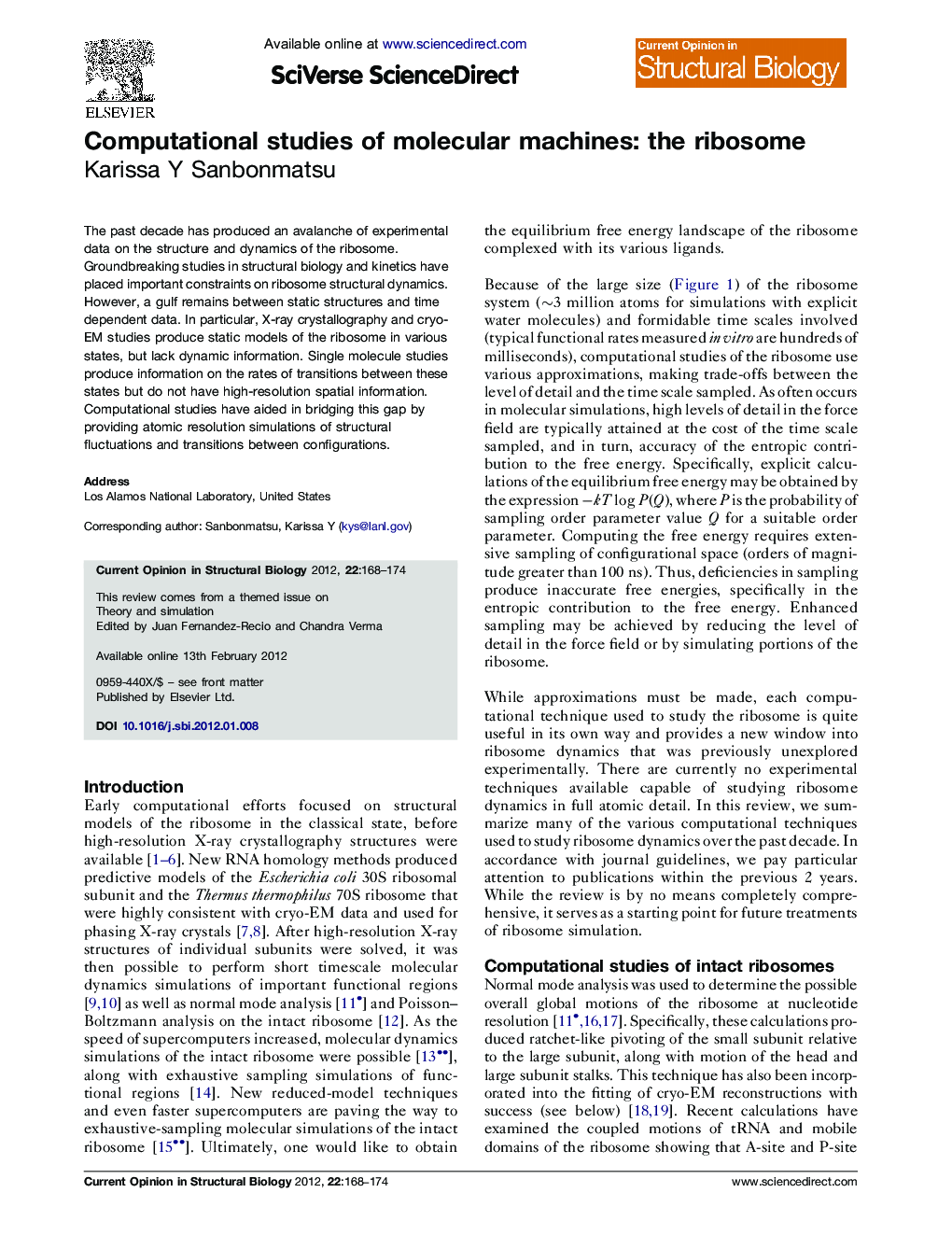| Article ID | Journal | Published Year | Pages | File Type |
|---|---|---|---|---|
| 1979194 | Current Opinion in Structural Biology | 2012 | 7 Pages |
The past decade has produced an avalanche of experimental data on the structure and dynamics of the ribosome. Groundbreaking studies in structural biology and kinetics have placed important constraints on ribosome structural dynamics. However, a gulf remains between static structures and time dependent data. In particular, X-ray crystallography and cryo-EM studies produce static models of the ribosome in various states, but lack dynamic information. Single molecule studies produce information on the rates of transitions between these states but do not have high-resolution spatial information. Computational studies have aided in bridging this gap by providing atomic resolution simulations of structural fluctuations and transitions between configurations.
► It is not possible to study ribosome dynamics at atomic resolution experimentally. ► Computation provides a window into dynamics that is unexplored experimentally. ► Computational studies of the ribosome have been tested and validated experimentally. ► Supercomputers have produced microsecond explicit solvent simulations (3 million atoms). ► All-atom reduced simulations of large, spontaneous conformational changes have been performed with 200 ms sampling.
